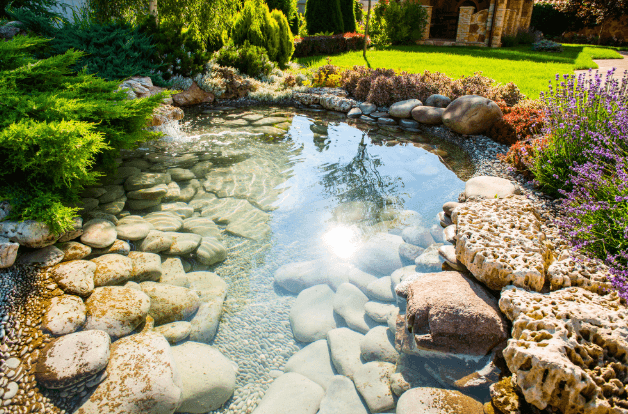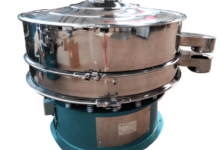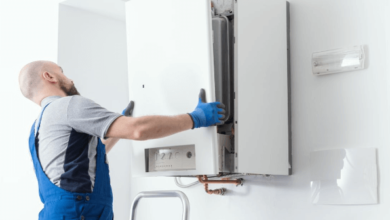How a Natural Pond Vacuum Helps Your Liner Last for Decades

Creating a serene backyard pond isn’t just about design, it’s about longevity and balance. A well-crafted pond should be a lasting source of relaxation, beauty, and ecological harmony. At the core of a pond’s health is the liner, quietly doing the work of containing water and protecting the soil beneath, preventing costly leaks and landscape erosion. But even the most durable liner isn’t immune to wear. Over time, debris, algae, and sediment can silently degrade the liner’s integrity if left unchecked. That’s where the Natural Pond Vacuum becomes a powerful ally, a tool that not only keeps the pond bottom clear of harmful buildup but does so in a way that preserves the delicate aquatic ecosystem. By gently removing waste and reducing organic decay, a natural pond vacuum supports both the liner and the health of every living thing in your pond, making it an essential part of long-term pond care.
Choosing the Right Foundation for Your Pond
Before we talk about maintenance, let’s understand the foundation. A pond liner acts as a waterproof barrier and determines how well your pond will perform and endure the elements. The choice of material makes a significant difference in lifespan and performance.
Common Pond Liner Materials and Their Expected Lifespan
Each type of liner has different benefits, costs, and durability. Here’s how popular materials compare:
EPDM Rubber – Lasts 20 to 40 Years
Considered the most durable option, EPDM is fish-safe, UV resistant, and handles extreme weather well. It’s highly flexible, making installation easier and reducing stress cracks over time.
RPE (Reinforced Polyethylene) – Lasts 15 to 25 Years
This lightweight but strong material is favored for large ponds and natural-style water features. It’s more tear-resistant than PVC and less expensive than EPDM.
PVC – Lasts 10 to 15 Years
The most affordable choice, but not without trade-offs. PVC can become brittle in cold climates and is more prone to cracking over time.
Butyl Rubber – Lasts 20 to 30 Years
A premium alternative similar to EPDM but often more costly. It performs exceptionally well in high-stress environments but may be harder to source.
The Invisible Threats to Your Pond Liner
Even a premium liner won’t last forever without careful planning and regular maintenance. Several environmental and human-made factors can compromise its longevity.
What Shortens a Pond Liner’s Life?
- Poor Installation: Wrinkles, folds, or improper leveling can wear down liners faster.
- UV Damage: Sunlight exposure over time can degrade some materials unless UV inhibitors are built-in.
- Root and Rock Punctures: Sharp debris beneath the liner can cause slow leaks. Always use a geotextile underlay.
- Neglect: Without routine care, debris buildup and unchecked algae can stress the liner and lead to leaks.
Why You Need a Natural Pond Vacuum
Many pond owners overlook sediment and debris buildup until it’s too late. A natural pond vacuum helps gently remove organic waste, silt, and sludge that gradually accumulate at the pond’s bottom — the silent destroyers of liner life.
Benefits of Using a Natural Pond Vacuum
- Gentle Cleaning: Unlike harsh mechanical vacuums, natural pond vacuums preserve biological balance while removing unwanted waste.
- Liner Preservation: Reduces acidic buildup and decomposing matter that can weaken liners.
- Water Clarity: Helps maintain a clear, healthy pond without chemical treatments.
- Eco-Friendly: Many models recycle water back into the pond and require no additives.
How Often Should You Vacuum a Natural Pond?
For most ponds, a light vacuuming every 2–3 weeks during peak seasons (spring through fall) keeps waste from compacting and affecting liner integrity. Deeper cleaning in early spring and late autumn is also beneficial.
Recognizing When Your Liner Needs Help
Even with good care, no liner lasts forever. It’s essential to monitor for signs of wear before they become serious problems.
Warning Signs to Watch For
- Unexplained Water Loss: If levels drop and you’ve ruled out evaporation, you may have a puncture.
- Cracks and Fading: Sun damage, especially with PVC, can cause brittleness and visible deterioration.
- Frequent Repairs: If patching becomes routine, a full replacement may be more cost-effective.
- Visible Algae Spots: Localized algae growth may indicate underlying liner failure or water flow issues.
Simple Ways to Extend the Life of Your Pond Liner
Preserving your liner’s lifespan isn’t complicated, but it requires consistency and smart choices.
Key Tips for Long-Term Success
- Use an Underlay: Always install a cushioning layer beneath the liner to prevent punctures.
- Avoid Toxic Chemicals: Harsh algaecides and detergents can break down liner materials over time.
- Control Plant Growth: Overhanging branches contribute to organic debris and shade — both of which affect liner health.
- Winterize the Pond: In cold climates, prevent ice from expanding against the liner by using floating de-icers or pond heaters.
- Vacuum Regularly: A natural pond vacuum is one of the easiest ways to prevent organic sludge buildup and reduce liner stress.
When It’s Time to Call the Experts
DIY efforts work well for small ponds or occasional liner patches. However, complete liner replacement or large-scale repairs are best left to professionals.
What Professionals Bring to the Table
- Precise Installation: Minimizes wrinkles, leaks, and future issues.
- Material Knowledge: Experts can suggest the right liner for your climate and pond size.
- Efficient Repairs: Instead of guessing, professionals diagnose and solve problems swiftly.
Brands like That Pond Guy have years of experience and access to industrial-grade materials, ensuring your water feature remains a highlight in your landscape for years.
Final Reflection on Long-Term Pond Health
A beautiful pond doesn’t maintain itself — it requires thoughtful construction, dependable materials, and regular upkeep. By investing in a durable liner and combining it with eco-conscious tools like a Natural Pond Vacuum, you’re giving your pond the best chance at long-term success.
Take time to check for damage, clean with care, and seek help when needed. These simple steps can preserve not only your pond’s health but also your peace of mind.
Clearing Up Confusion
How long does a pond liner actually last?
It depends on the material. EPDM liners can last up to 40 years with proper care, while PVC liners may only last around 10–15 years. Routine maintenance significantly extends this lifespan.
Is a natural pond vacuum safe for fish and plants?
Yes, natural pond vacuums are designed to work gently without disturbing aquatic life. They remove debris while preserving beneficial bacteria and biological balance.
Can I install a pond liner myself?
For small ponds, yes — but be sure to use an underlay and follow installation guides. For larger or deeper ponds, professional installation ensures long-term success and fewer repairs.
How often should I clean my pond with a vacuum?
Light cleaning every 2–3 weeks during active seasons is ideal. Deeper cleaning in spring and fall helps prevent long-term sludge accumulation that harms liners.
What’s the first sign of a failing liner?
Unusual or persistent water loss is the most common early warning. If evaporation is ruled out, inspect the pond floor and walls closely for signs of cracks, softness, or algae blooms.







